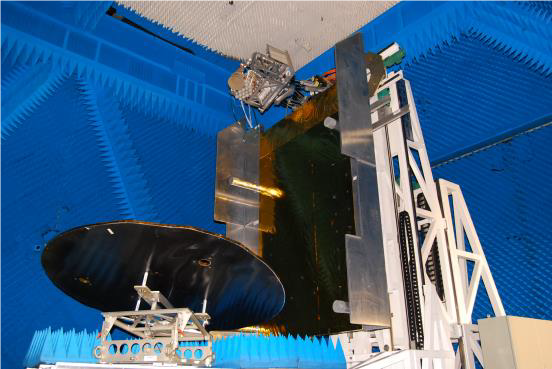Keeping Satcom Safe – Anti-jamming Solution for Antennas
Thales Alenia Space with the support of ESA has successfully developed anti-jamming antenna capabilities for reflector-type antennas – whose appeal is set to generate great interest on the commercial market.

Satellite jamming, when deliberate, involves disruption to or the blocking of wireless communications. These illegal attacks happen when individuals or institutions interfere with or prohibit access to the satellite, disrupting the flow of information and stopping data transmission. Jamming can also be unintentional and the result of human error – for example when an institution’s own radar and transmissions unwittingly interfere – this accidental interference can sometimes be difficult to detect or distinguish from intentional jamming.
Demand from operators increasing
As the technology needed to jam many types of satellite signals is commercially available and relatively inexpensive (according to the Centre for Strategic and International Studies), it is no wonder that operators are keen to find new solutions. The need to protect commercial communications links from interference is increasingly recognised.
Since antennas on satellites represent a possible intrusion point, the ESA/Thales Alenia Space team have developed ‘advanced jammer avoidance capabilities’ for reflector antennas (the most common antennas) to suit commercial telecommunication systems.
Until now, the most state-of-the-art solutions have not been cost-efficient for commercial use due to the complex architecture involved. “More and more requests in recent years have been coming from operators calling for anti-jamming low-cost solutions,” says Jaspal Bharj, Technical Officer of the project at ESA.
“Thales Alenia Space has developed, in this ARTES Competitiveness & Growth activity, a competitive solution achieving optimum mass, volume, power consumption and cost,” he explains, “The product focuses on a high isolation level towards undesired signals or interference. It’s an add-on, adaptable for reflector antennas, and for the first time a solution is fully integrated on the payload and not a separate entity.”
“A number of operators are sensitive to the jamming possibilities in different locations, and this new Thales Alenia Space product is dedicated to civil satcom applications.” Jaspal Bharj, Technical Officer at ESA
Madivanane Nadarassin, Thales Alenia Space, concludes: “Finding a low-cost flexible solution has been challenging, but thanks to this ARTES contract, we’ve succeeded in developing brand new equipment. The flight model has been manufactured and delivered for a first flight application.”


